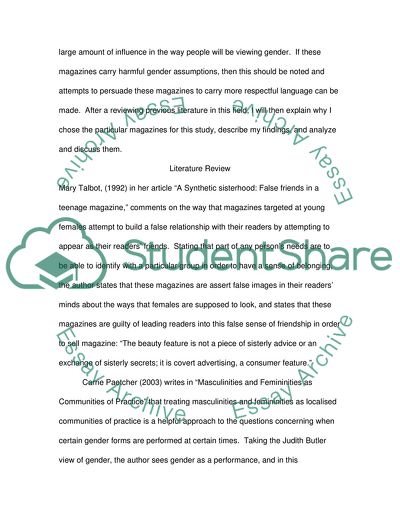Cite this document
(Heteronormativity and Gender Norms Assignment Example | Topics and Well Written Essays - 2750 words, n.d.)
Heteronormativity and Gender Norms Assignment Example | Topics and Well Written Essays - 2750 words. https://studentshare.org/gender-sexual-studies/1713651-language-and-gender-magazine-editors-letters-and-heteronormativity-and-gender-norms
Heteronormativity and Gender Norms Assignment Example | Topics and Well Written Essays - 2750 words. https://studentshare.org/gender-sexual-studies/1713651-language-and-gender-magazine-editors-letters-and-heteronormativity-and-gender-norms
(Heteronormativity and Gender Norms Assignment Example | Topics and Well Written Essays - 2750 Words)
Heteronormativity and Gender Norms Assignment Example | Topics and Well Written Essays - 2750 Words. https://studentshare.org/gender-sexual-studies/1713651-language-and-gender-magazine-editors-letters-and-heteronormativity-and-gender-norms.
Heteronormativity and Gender Norms Assignment Example | Topics and Well Written Essays - 2750 Words. https://studentshare.org/gender-sexual-studies/1713651-language-and-gender-magazine-editors-letters-and-heteronormativity-and-gender-norms.
“Heteronormativity and Gender Norms Assignment Example | Topics and Well Written Essays - 2750 Words”. https://studentshare.org/gender-sexual-studies/1713651-language-and-gender-magazine-editors-letters-and-heteronormativity-and-gender-norms.


